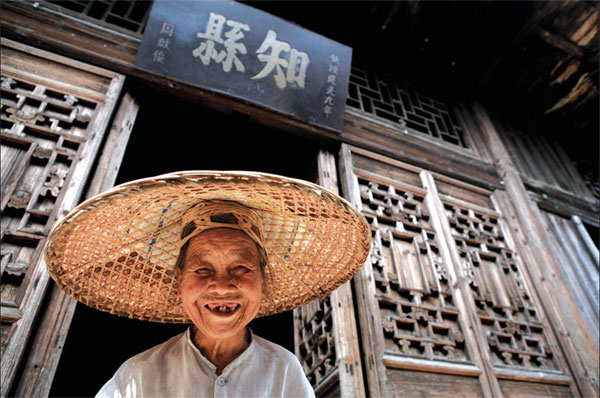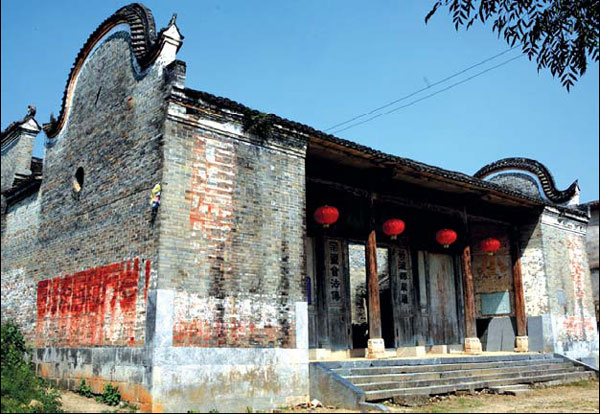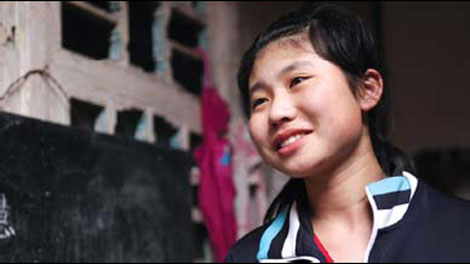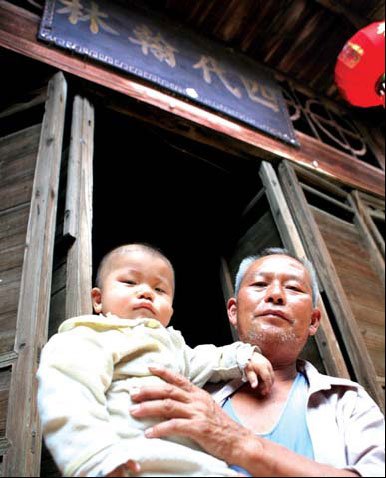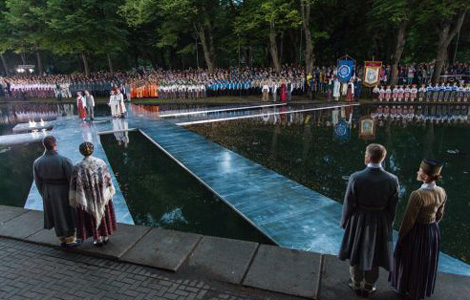Knowledge of the past
Updated: 2013-07-04 07:52
By Li Yang (China Daily)
|
||||||||
|
A woman in her 80s poses in front of her house. The wooden board hung above the gate indicates her ancestor used to work as the county head. Photos by Huo Yan / China Daily |
|
The Zhou family temple pays tribute to the village's past glories. |
Jiangtou village was once famous for producing many top academics. A visit to the village offers a glimpse of Chinese traditions long forgotten in other parts of the country. Li Yang reports in Guilin, Guangxi.
My visit to Jiangtou village feels like a pilgrimage to experience the type of Chinese tradition that has long been forgotten in many parts of the country.
Located in Lingchuan county in the Guangxi Zhuang autonomous region, the village is surrounded by mountains on three sides. To the east runs a river called Hulong, which literally translates as "Defending the Dragons".
There are 200 stone horse posts of various shapes and sizes surrounding the village along the river. Each represents an outstanding scholar or official from the village with his name and title inscribed on it.
Most of the statues were smashed to pieces during the "cultural revolution" (1966-76), with the damaged pieces now lying in the grass.
A 200-year-old stone bridge crossing over the river is the village's connection to the outside world.
A stone pagoda of about three meters high stands on the other side of the river. The pagoda is called Zichu, meaning "a kitchen of literacy". Villagers think it is improper to casually throw away paper written or printed with characters. All waste paper is collectively burned in the pagoda twice a month in a simple ceremony.
Villagers share the same family name, Zhou, and they identify themselves as descendants of Zhou Dunyi, who is believed to be the founder of Neo-Confucianism, an ethical and metaphysical Chinese philosophy in the Song Dynasty (960-1279).
Neo-Confucianism was to create a more rationalist and secular form of Confucianism by rejecting superstitious and mystical elements of Taoism and Buddhism.
Zhou Dunyi's philosophy has great influence on the villagers' attitudes and actions even today.
Most villagers I have met are polite and modest.
A big Zhou family temple, built with stone bases, gray bricks, wooden pillars and rafters as well as black earthenware tiles, is perched near the bridge on the village side of the river.
The rundown wooden frontage indicates the temple has not been repaired for a long time.
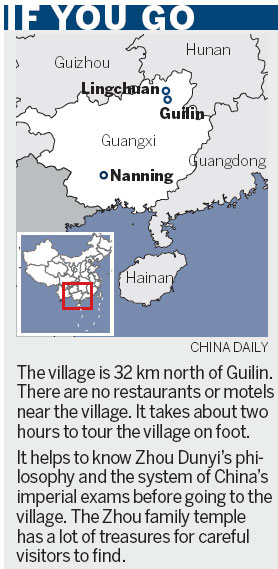
Zhou Zhihua, gatekeeper of the temple, says: "Five yards of the temple were demolished in the 'cultural revolution'. What remains is only the classroom yard."
The temple, once covering an area of 1,200 square meters, was a preparatory school where villagers took the imperial exams from 1888. There were dorms, libraries, classrooms, canteens, gardens and auditoriums.
The temple was the location of many academic achievements with the village enjoying great success in the imperial exams.
The imperial exams were the main channel for the Chinese government to recruit talent according to their academic merits from the Han Dynasty (206 BC-AD 220) to 1905.
Testing candidates' knowledge of Confucian classics, writing, military strategy, civil law, revenue and taxation, agriculture and geography, the exams were given on four levels - county, provincial, national and palace.
In the 150 years before 1905, when the imperial exam was abolished, out of the village's 158 families, eight people passed the palace exam, nine passed the national exam, 28 passed the provincial exam and hundreds passed the county exam.
Half of the people from Jiangtou who passed the exam became teachers in higher education institutes. The other half became officials of various levels, famous for their honesty and uprightness.
These model villagers spent most of their wealth financing schools in the village and refurbishing their residences.
Their names and titles are not only worshipped in the temple but also appear on the commemorative plaques hung on the gates of their descendants' residences.
You can see from the wooden boards on the gate how many important scholars or officials came from each family.
Around the temple, I find some of the best-preserved ancient buildings I've ever seen.
Zhou Sixiong, a former village head in his 70s, says about 10 old residences were built in the Yuan Dynasty (1271-1368) when the village's forefathers moved from Dao-xian county of Hunan province to the current location.
Twenty residences were built in the Ming Dynasty (1368-1644) and the other 120 in the Qing Dynasty (1644-1911).
Villagers are mostly farmers. Those who have left to work in cities still have a strong sense of the importance of protecting their old houses and spend most of their income on their children's education.
Zhou Chonghui is an 11-year-old primary school student from a family that had four generations of hanlin, equivalent to today's academician, in the Qing Dynasty.
Her parents work in cities, and her grandparents are farmers.
When asked what she would like to do in the future, she says: "I will try my best to study and become a writer in the future."
Her grandfather Zhou Yeji says: "The wars and political movements from the 1910s to the 1970s broke my family's literacy tradition. I hope my granddaughter and grandson can inherit the family's legacy and change their fate through knowledge.
"They represent the future of our village."
Contact the writer at liyang@chinadaily.com.cn.
|
Zhou Chonghui, 11, is from a family that had four generations of top academicians throughout the Qing Dynasty (1644-1911). |
|
Zhou Yeji and his grandson pose at the gate of his old house, where four generations of excellent scholars lived in the Qing Dynasty (1644-1911). |
(China Daily USA 07/04/2013 page 9)
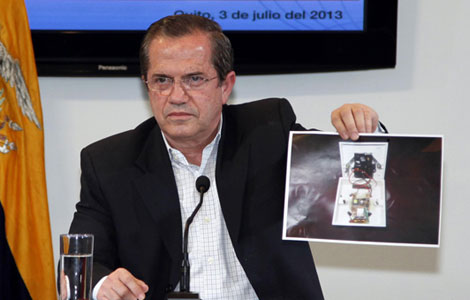
 Ecuador finds spy mic for Assange meeting
Ecuador finds spy mic for Assange meeting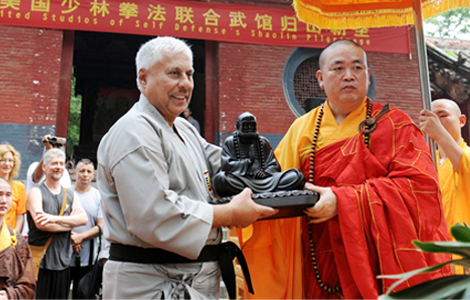
 US martial artists arrive at Shaolin Temple
US martial artists arrive at Shaolin Temple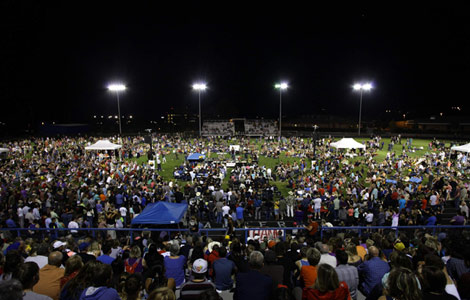
 July 4 in Prescott: Balance of grief, patriotism
July 4 in Prescott: Balance of grief, patriotism
 Jubilant crowds celebrate after Mursi overthrown
Jubilant crowds celebrate after Mursi overthrown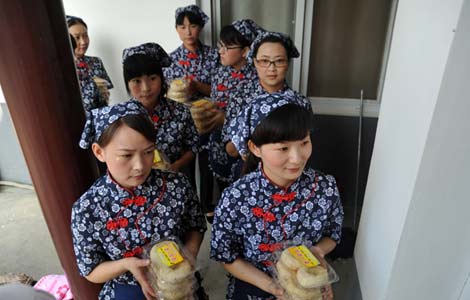
 Growth slowing for services
Growth slowing for services
 Venezuela eyed as Snowden seeks asylum
Venezuela eyed as Snowden seeks asylum
 Anti-terror drill staged in Xinjiang
Anti-terror drill staged in Xinjiang
 Memorial service held for 19 Arizona firefighters
Memorial service held for 19 Arizona firefighters
Most Viewed
Editor's Picks

|

|
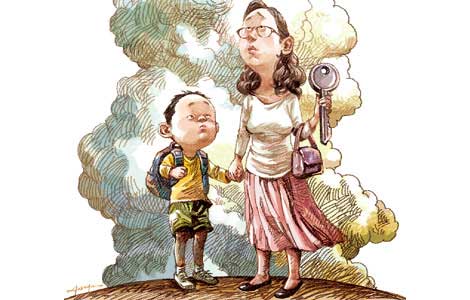
|

|

|
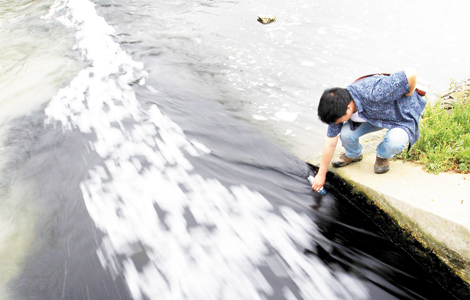
|
Today's Top News
US welcomes China's engagement in Africa
Data show shifts in US, China economies
Obama, Merkel agree talks on surveillance program
Filipino executed for drug trafficking
Obama orders US to review aid to Egypt
Snowden still in Moscow
China urges more efficient uses of fiscal funds
Egypt army topples president Morsi
US Weekly

|

|
